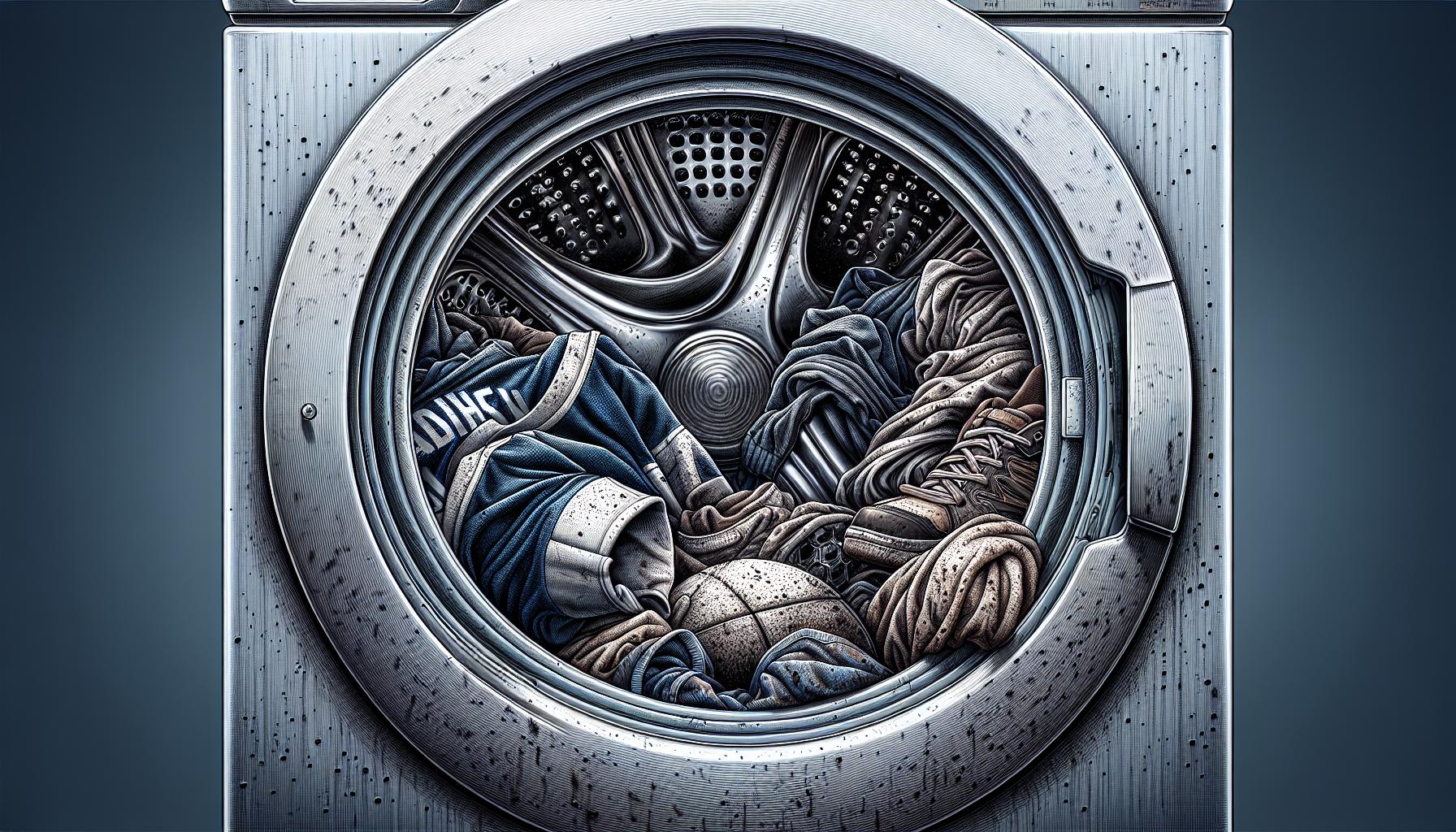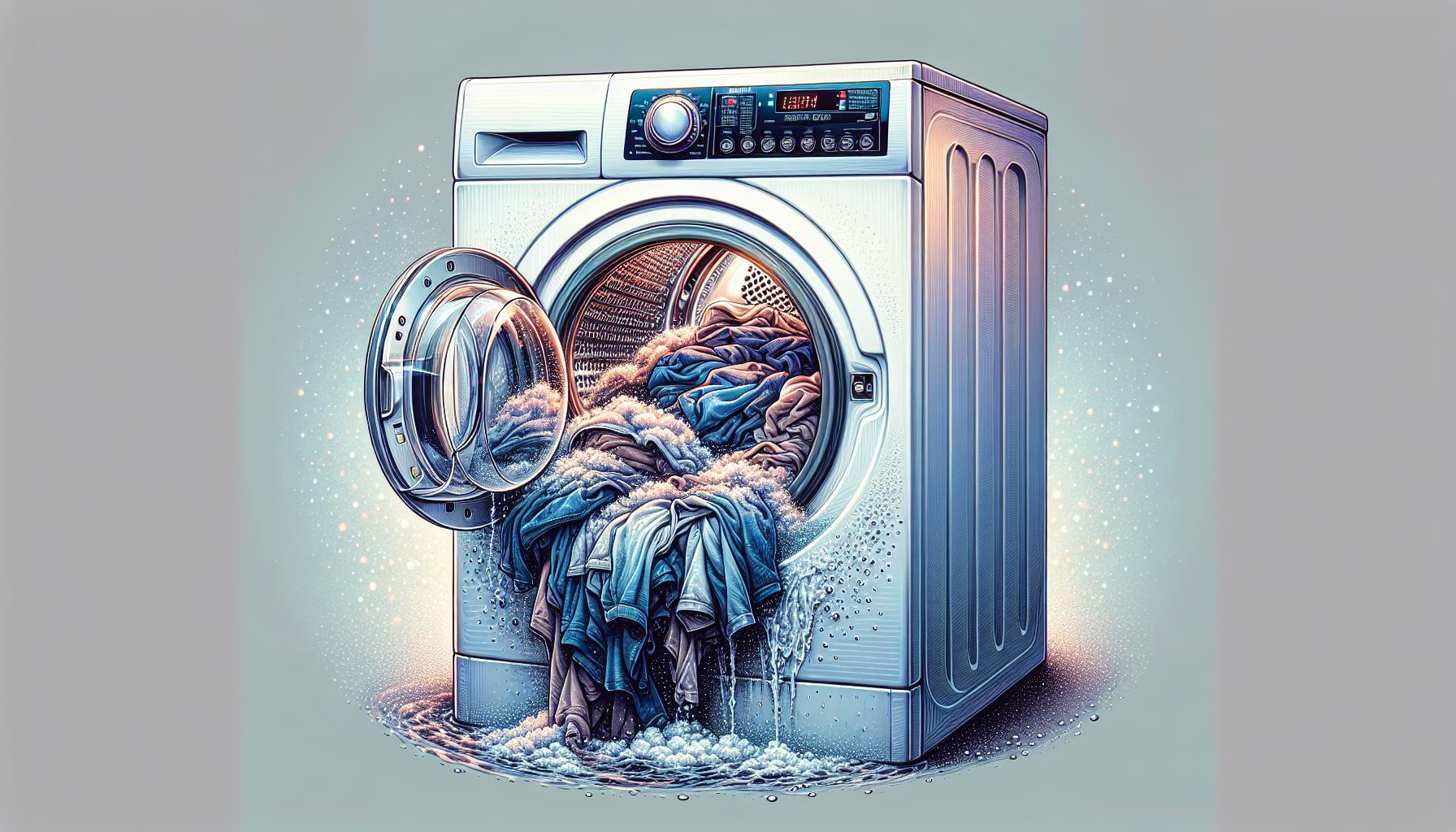Ever wonder why your washing machine has a prewash setting? It’s not just an extra button to confuse you. The prewash function can be a game-changer for tackling heavily soiled clothes or stubborn stains.
I’ve found that understanding and using the prewash cycle can make a significant difference in the cleanliness of my laundry. It’s especially useful for items that need a little extra care before the main wash.
So, let’s dive into what prewash is and how it can benefit your laundry routine.
Understanding Prewash in Washing Machines
The Basics of Prewash
Prewash in washing machines adds an initial cleaning phase before the main wash cycle. It involves soaking the clothes in water mixed with detergent to loosen dirt and grime. Modern washing machines have a dedicated prewash compartment in the detergent drawer. Adding detergent to this compartment triggers the prewash cycle. This extra step is designed to tackle heavy stains more effectively, making the subsequent main wash more efficient. Not all fabrics require prewash, but it’s particularly beneficial for heavily soiled items, work clothes, or sports gear.
When to Use Prewash
Using prewash is advisable for laundry with significant dirt, such as mud-stained clothes or oily fabrics. It’s ideal for parents dealing with children’s clothes stained with food, paint, or grass. Remember to avoid using it for delicate fabrics or lightly soiled items to conserve water and energy. Prewash is also useful after outdoor activities, like hiking or gardening, which result in ground-in dirt. In general, if stains are visible and embedded deeply, activating the prewash cycle ensures better cleanliness.
Benefits of Using Prewash

Improved Stain Removal
Using the prewash setting enhances the washing process by targeting tough stains. Clothes get an extra soak in water and detergent, ensuring dirt and grime loosen effectively. Common stains like grass, mud, or food residues get pre-treated, increasing the likelihood of spotless results in the main cycle. Prewash raises the efficiency of stain removers, providing a head-start on cleaning before the main wash even begins.
Handling Heavily Soiled Clothes
Heavily soiled clothes benefit significantly from a prewash cycle. Items like work uniforms, sportswear, or clothing worn during outdoor activities often collect substantial dirt and sweat. Prewash helps break down this buildup, preventing it from redepositing on other garments during the main cycle. This step ensures that tough grime gets attacked early, leaving clothes cleaner and fresher from the start.
How to Use Prewash Effectively

Choosing the Right Detergent
Selecting the appropriate detergent enhances the effectiveness of the prewash cycle. For heavily soiled items, I recommend a strong detergent with enzymes. Enzymes break down protein-based stains, making them easier to remove. For delicate fabrics, using a mild detergent prevents damage. Always measure the detergent according to the manufacturer’s guidelines to avoid residue and ensure optimal cleaning. Prewash compartments in washing machines are designed to handle specific detergent amounts, so precise measurement is crucial.
Setting Up Your Washing Machine
Proper setup of the washing machine ensures the prewash cycle works effectively. First, I select the prewash option from the machine’s settings menu. For front-load washers, I add detergent to the designated prewash compartment. In top-load washers, I pour detergent directly into the drum before adding clothes. Next, I choose the appropriate water temperature based on fabric type. For heavily stained items, hot water enhances stain removal, while cold water is suitable for delicate fabrics. Finally, adjusting the prewash cycle duration based on soil level ensures thorough initial cleaning. A typical prewash cycle lasts about 15-30 minutes.
Comparing Prewash with Regular Wash Cycles

Differences in Water Usage
Prewash cycles use more water compared to regular wash cycles. Prewash involves a separate rinse and spin cycle before the main wash. Regular wash cycles use water more efficiently since there is no preliminary rinse. While prewash consumes more water to ensure heavy soil removal, the main wash focuses on thorough cleaning with less water. For example, prewash cycles might use 20-30 extra liters of water, which is significant for heavily soiled items.
Impact on Wash Time
Prewash cycles extend the overall wash time by approximately 15-30 minutes. Prewash settings add an extra phase that precedes the main wash. In contrast, regular wash cycles operate within a standard timeframe, usually ranging from 30 to 90 minutes depending on the selected settings. If you need a quick wash, skipping prewash saves time but may compromise the cleanliness of heavily soiled clothes. For instance, a typical wash completed in 60 minutes might extend to 90 minutes when using the prewash setting, which is vital for specific loads.
Conclusion
Using the prewash setting on your washing machine can make a significant difference in the cleanliness of your heavily soiled clothes. While it does use more water and extends the wash time, the benefits of removing stubborn dirt and grime are undeniable. Skipping this step might save you some time, but it could compromise the overall cleanliness of your laundry. By understanding how prewash cycles work and when to use them, you can optimize your washing routine for the best possible results.
Frequently Asked Questions
What is the purpose of the prewash setting on a washing machine?
The prewash setting helps loosen dirt and grime from your clothes before the main wash. It is especially useful for heavily soiled clothing.
How long does a prewash cycle typically last?
A prewash cycle generally lasts between 15 to 30 minutes, depending on your machine and settings.
Does using the prewash cycle affect water usage?
Yes, using the prewash cycle increases water usage because it involves an additional rinse before the main wash.
Is it necessary to use a special detergent for the prewash cycle?
No, you can use the same detergent as the main wash; just make sure to follow the manufacturer’s recommendations for the quantity.
Can skipping the prewash cycle save time?
Yes, skipping the prewash cycle can save time, but it may affect the cleanliness of heavily soiled clothes.
What are the primary benefits of using a prewash cycle?
The prewash cycle helps remove heavy soils and stains more effectively, leading to cleaner clothes after the main wash.
Are prewash cycles more efficient than regular wash cycles in removing heavy soil?
Yes, prewash cycles are designed to tackle heavy soil and stains more effectively than regular wash cycles.
How does a regular wash cycle compare to a prewash cycle in terms of time?
A prewash cycle adds an additional 15-30 minutes to the wash time, making regular wash cycles faster.
Will using the prewash cycle extend the overall washing time?
Yes, integrating a prewash cycle extends the overall washing time by 15 to 30 minutes.
Is it environmentally friendly to use the prewash cycle?
Using the prewash cycle can be less environmentally friendly due to increased water usage, so it’s best reserved for heavily soiled garments.
